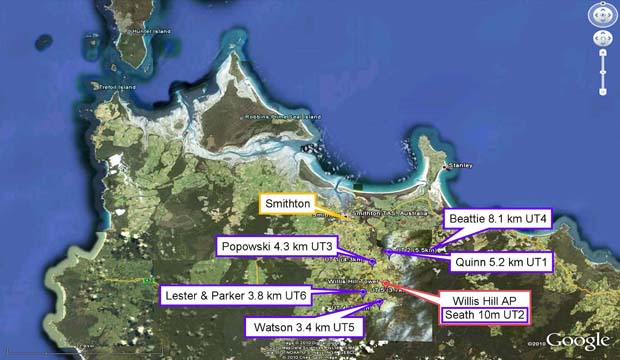CSIRO trials TV aerial Wi-Fi broadband

The CSIRO has started testing its wireless broadband technology, which uses existing TV antennas, at the first National Broadband Network roll-out site of Smithton in Tasmania.
The system, named Ngara, works by installing antennas on existing TV broadcasting towers that transmit wireless broadband to households through their existing TV antennas, although slightly modified as some components in existing antennas don't allow them to be used as transmitters.
CSIRO had tested the uplink part of the technology in the lab, but this trial aimed to test it out in the real world.
For the trial, the CSIRO set up terminals at six farms outside of Smithton ranging from 10 metres to 8.1km away from a Broadcast Australia tower.
Each terminal sent video, phone or web browsing data at a rate of 12 megabits per second (Mbps) through one standard TV channel of 7MHz.
Using 3-Watt antennas, the team enabled a user terminal to send high-quality signals up to 15.5 kilometres. According to CSIRO, TV transmitters normally use 40 kilowatts.
CSIRO was able to transmit so far with so little power by applying multi-user multiple input, multiple output (MIMO) and spatial division multiplexing techniques to focus information into a beam, called "beam forming".
While the uplink test was a success, getting data downloaded was still a work in progress, according to CSIRO ICT centre director Dr Ian Oppermann.
"The team is only able to beam form to one user at the moment, but this is an experiment, not everything is going to work on the first go. We are confident we will get there soon," Oppermann said in a statement.
"This world first is testament to the tremendous efforts our team has made in the lab and here in Smithton," he added.
The technology depends on having access to the digital dividend, or the spectrum being made available by the switching off of analog television broadcasting. The spectrum is set to be used by mobile services such as long-term evolution. The CSIRO is developing its technology on the assumption that those services will not use all the available spectrum in regional and rural areas.
Last week the CSIRO launched a broadband applications research lab at its site in Marsfield.

A map of the area where the trial was held. (Credit: CSIRO)
The team at the access point (Credit: CSIRO)
Six users simultaneously sent data (Credit: CSIRO)
Spectators at the access point (Credit: CSIRO)